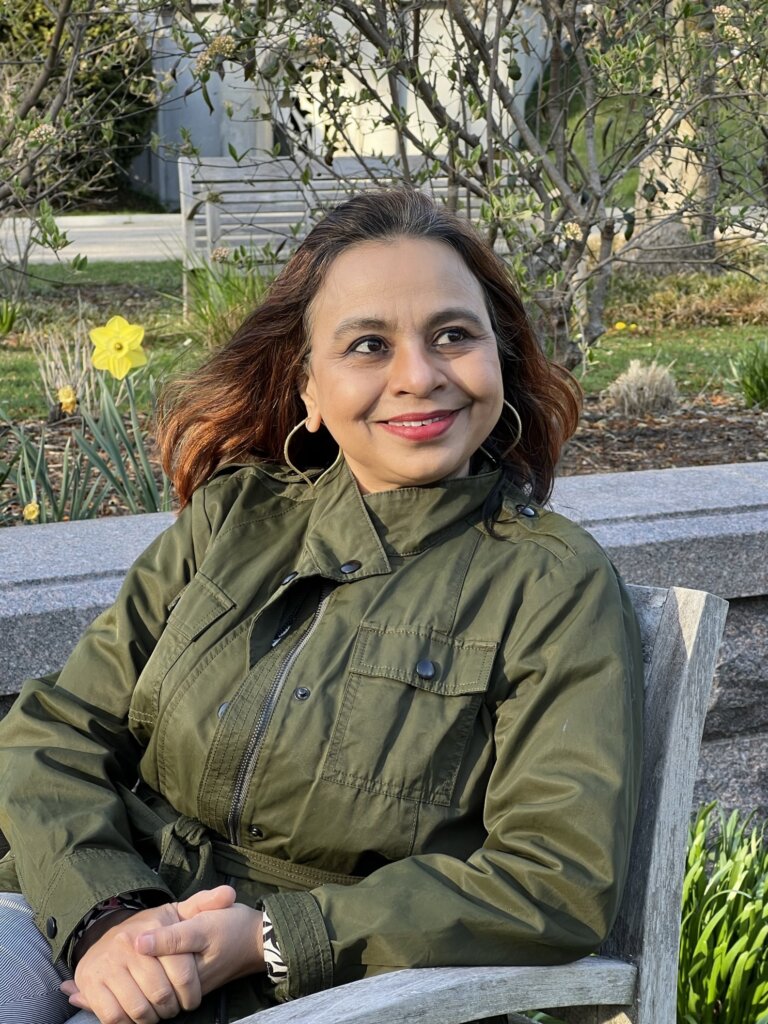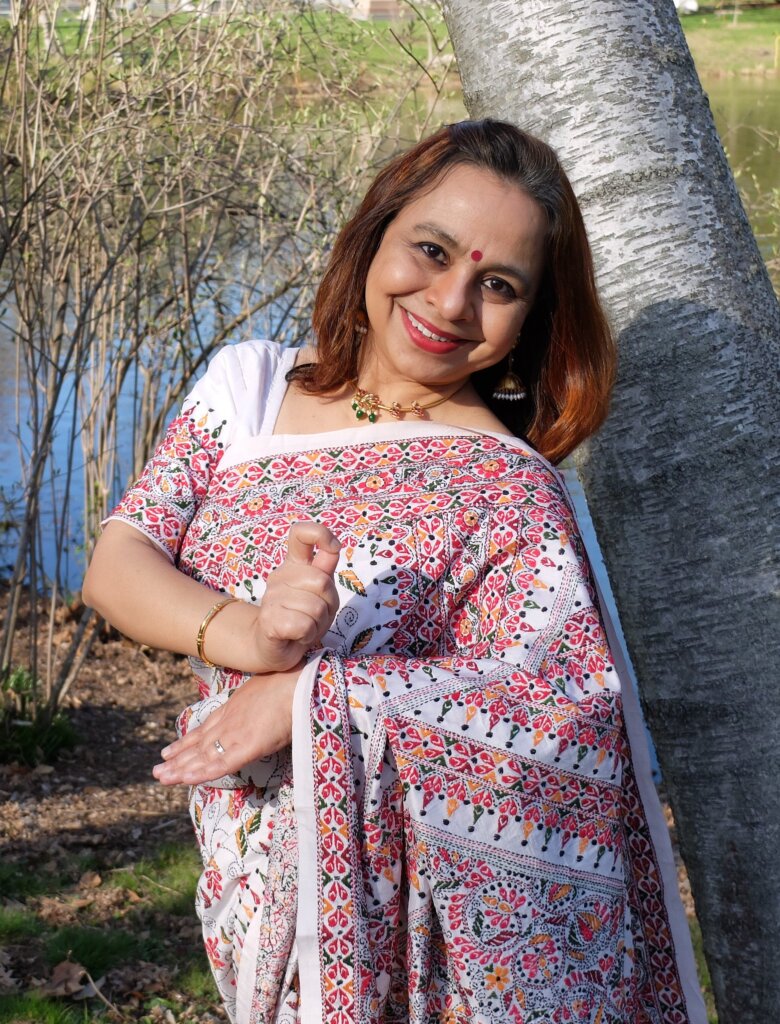Seasons of Life: A Conversation with Artist-in-Residence Swati Biswas
Jessica Bussmann April 1, 2024 Art

In 2023, we welcomed seven Artists-in-Residence to create original works inspired by their experiences at Mount Auburn. Meet dancer & choreographer Swati Biswas.
__________________________________________
You have a PhD in Biology and do academic medical research. You’ve also trained in Indian classical dance styles like Kathak, Bharatnatyam, and Uday Shankar Style. How did dancing become a part of your life?
I loved to dance since my childhood, and our landlord was a folk-dance teacher, so I started dancing with his students when I was 5 years old. My favorite pastime as a child was to choreograph with different songs. My mom used to take me to local dance and recitation competitions. My guru, Sri Pradipta Niyogi, spotted me in one such competition where I performed a dance that I had choreographed. He asked my mom if I could join his classes. From that point on, I took lessons from him in Kathak, Bharatnatyam, and in a creative style for several years. I truly feel blessed to learn from a guru (teacher) who was encouraging, inspiring, and just a very kind person. His teaching stayed with me, and my love of dance continued alongside education, family, and career. Instead of doing the pure and strict form of classical dance, I enjoyed using all these different styles in my choreography. Dance has always been my refuge, something that I have done because I love it. My father was a Hindustani classical singer, so I grew up listening to Raga-based songs. I really think having a guru who nurtured my love of dancing, parents who encouraged me to pursue dance as a serious hobby, and a spouse who supported my passion over three decades of our marriage, all of these helped me to continue my journey as a dancer.
Tell us about your residency experience. What has it been like choreographing work at/for the Cemetery?
Long before I was selected for the AiR program, I felt inspired walking along the cemetery. There were several spots that I had imagined would be the best backdrop for a dance, and the residency gave me the opportunity to fulfill some of those wishes. I have done a few outdoor choreographies around the place, soaking in the sun and feeling the spring afternoon. I have performed dance choreographies in front of the Bigelow chapel, the Washington Monument, the monument of Mary Baker Eddy, and around Halcyon Lake. I experienced unexpected surprises, like a duck flying into the pond behind me when I was dancing near it. I caught glimpses of the setting sun when I was choreographing a love song in front of the Washington Tower and felt the soft green grass under my feet in the lawn in front of the Bigelow Chapel. The scorching sun and the midday chirping of the songbirds just added to the essence of the long and tiring summer days. All these places and the choreography sessions gave me the inspiration that helped me align my thoughts about how our life has these seasons, which we pass through at our own pace, in our own way. In recent years, I have also realized my love for dancing in outdoor settings, in the midst of nature. There is an inexplicable energy that nature offers that is serene and divine. Being selected for this program gave me that opportunity, for which I am grateful.
What is your creative process like? Do you start with a movement, a gesture, an image, a song, etc?
My creative process starts with a particular thought, sometimes spontaneous, sometimes meditative. It is usually never a fully formed theme at the beginning. Sometimes, it can even start with a piece of music (a song) that I find inspiring and build that into a theme. For my AiR project, I worked with a vocalist so that he could sing two major tracks that would support my theme. We had quite a few overseas conversations to brainstorm the ideas, the moods that I wanted to convey, and then the recording.
It is always a multistep process, with many sequential or parallel steps that I need to take based on a particular theme. It takes many hours of listening and selecting songs, writing the concept, and then starting choreography with the dancers I select. The costumes and stage décor, the visual aspect of the actual event – these are also very important, and the dance steps need to be suitable for the costume, the concept, and the type of music that I select.
Can you tell us what audiences may expect for your final performance on May 5?
In the final performance, I will draw a parallel between the four seasons and the phases of our lives, from childhood through old age. Each phase, depicting one or more emotions, will be presented through original dance choreography done by me, primarily based on Indian Classical Ragas. I will perform a few solo pieces, with two segments where three other dancers – Swati, Nishka, and Tanisha – will join me. I will also dance to a song written by the Nobel laureate poet Rabindranath Tagore, with two poetry segments, “Rain” by Robert Creeley, and “The Day is Done” by Henry Wadsworth Longfellow, which resonated with my vision of this program.
__________________________
Seasons of Life
Sunday, May 5, 1 PM
Join Artist-in-Residence Swati Biswas for a traditional Indian dance performance of her work, Seasons of Life, a series of four short dance vignettes that explore the parallels between seasonal change and life phases at Mount Auburn Cemetery.
Artist-in-Residence (2023-2024) Swati Biswas on Her Dance Creation Process and Practice



Comments